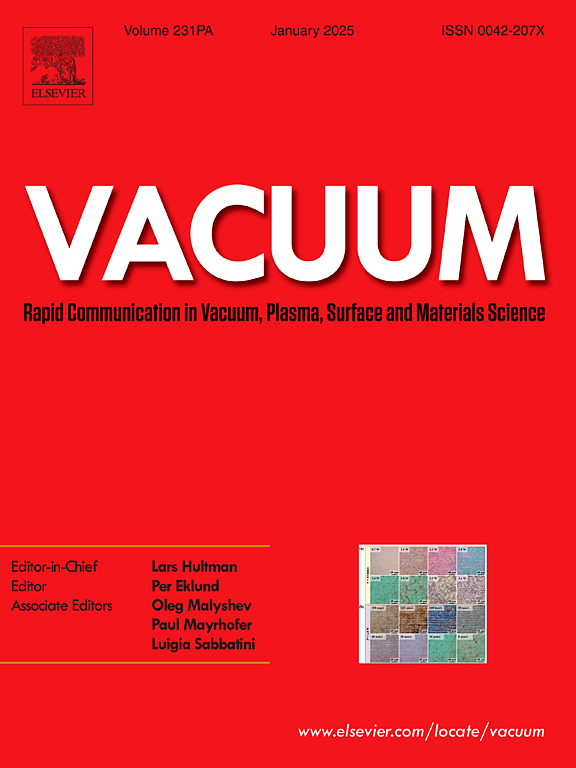Magnetron dual-target Co-sputtered CuO/TiO2 heterojunction films for efficient photocatalytic applications
IF 3.8
2区 材料科学
Q2 MATERIALS SCIENCE, MULTIDISCIPLINARY
引用次数: 0
Abstract
CuO/TiO2 heterojunction films were fabricated via a DC magnetron copper-titanium dual-target co-sputtering process, the impact of the titanium target power on the photocatalytic performance and structural characteristics was investigated. To optimize photocatalytic degradation of methyl orange, the DC power of the titanium target was varied within the range of 0 W–250 W, while the copper target power remained constant. As the titanium target power increased, CuO/TiO2 composite films were formed, and the surface morphology of the films was tuned accordingly. When the titanium target power was twice that of the copper target during the co-sputtering process, the film exhibited enhanced photocatalytic behavior, which can be ascribed to the heterojunction structure, the hydrophilic surface and the reduced charge transfer resistance. Scavenger tests were employed to investigate the active species. The films prepared by the co-sputtering method still exhibited high Methyl orange degradation efficiency (over 65 %) after five cycles.
磁控管双靶共溅射CuO/TiO2异质结膜的高效光催化应用
采用直流磁控铜钛双靶共溅射法制备CuO/TiO2异质结薄膜,研究了钛靶功率对薄膜光催化性能和结构特性的影响。为了优化光催化降解甲基橙,将钛靶材的直流功率在0 W - 250 W范围内变化,而铜靶材的直流功率保持不变。随着钛靶功率的增大,形成CuO/TiO2复合膜,膜的表面形貌也随之调整。在共溅射过程中,当钛靶功率是铜靶功率的两倍时,薄膜表现出增强的光催化行为,这可归因于异质结结构、亲水性表面和电荷转移阻力的降低。采用清道夫试验调查活性种。共溅射法制备的膜经过5次循环后仍具有较高的甲基橙降解效率(65%以上)。
本文章由计算机程序翻译,如有差异,请以英文原文为准。
求助全文
约1分钟内获得全文
求助全文
来源期刊

Vacuum
工程技术-材料科学:综合
CiteScore
6.80
自引率
17.50%
发文量
0
审稿时长
34 days
期刊介绍:
Vacuum is an international rapid publications journal with a focus on short communication. All papers are peer-reviewed, with the review process for short communication geared towards very fast turnaround times. The journal also published full research papers, thematic issues and selected papers from leading conferences.
A report in Vacuum should represent a major advance in an area that involves a controlled environment at pressures of one atmosphere or below.
The scope of the journal includes:
1. Vacuum; original developments in vacuum pumping and instrumentation, vacuum measurement, vacuum gas dynamics, gas-surface interactions, surface treatment for UHV applications and low outgassing, vacuum melting, sintering, and vacuum metrology. Technology and solutions for large-scale facilities (e.g., particle accelerators and fusion devices). New instrumentation ( e.g., detectors and electron microscopes).
2. Plasma science; advances in PVD, CVD, plasma-assisted CVD, ion sources, deposition processes and analysis.
3. Surface science; surface engineering, surface chemistry, surface analysis, crystal growth, ion-surface interactions and etching, nanometer-scale processing, surface modification.
4. Materials science; novel functional or structural materials. Metals, ceramics, and polymers. Experiments, simulations, and modelling for understanding structure-property relationships. Thin films and coatings. Nanostructures and ion implantation.
 求助内容:
求助内容: 应助结果提醒方式:
应助结果提醒方式:


